COLONIAL WILLIAMSBURGWILLIAMSBURG, VIRGINIA |
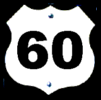 |
COLONIAL WILLIAMSBURGWILLIAMSBURG, VIRGINIA |
 |
Williamsburg was the capitol of Virginia for over 80 years from 1699 to 1780. Prior to that time the capital was in Jamestown. After the Jamestown statehouse burned for the fourth time, the Royal Governor at the time, Francis Nicholson, seized on the opportunity to propose that the capital be moved to a better location further inland.
The House of Burgesses chose the town called Middle Plantation, which they renamed Williamsburg, in honor of the king of England, William III. At the time, the town contained a church, a college, a tavern, two mills, several stores and neighborhoods of homes, many belonging to local tobacco planters.
Today, Colonial Williamsburg is one of the oldest and largest living history museums. It is the restored and reconstructed capital of eighteenth-century Virginia.
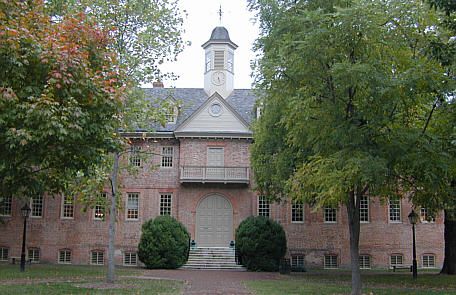 |
|
The College of William and Mary in Virginia A charter was granted by King William and Queen Mary in 1693. By fostering “good arts and sciences” and by educating the youth in “good letters and manners.” the college has maintained its original mission as “a place of universal study.” The college was
transferred to the Commonwealth of Virginia in 1906. The General Assembly met in this building 1700 to 1704, and again 1747 to 1754. It is the oldest academic building in continuous use in the United States. On the left is the Brafferton, erected as an Indian school in 1723. On the right is the President’s House, built in 1732, accidentally burned by French soldiers in 1781, it was restored by Louis XVI in 1786. Gift of Class of 1956 (Williamsburg Marker) |
The College of William and Mary — The Wren Building is the oldest academic building in use in America. Flanking this building to the north is the President’s House and to the south is the Brafferton.
Construction of the Wren Building began in 1695, two years after the college received its charter from King William and Queen Mary. Attending classes in the Wren Building were several of the college’s distinguished alumni, including Thomas Jefferson, John Marshall and James Monroe.
A chapel was added to the Wren Building in 1732. In the crypt below the chapel are the remains of Sir John Randolph and his sons Peyton and John. Peyton and John, who were cousins of Thomas Jefferson, split loyalties. John, despite his close kinship with Jefferson, regarded the call for independence as treasonous. Peyton, on the other hand, was so supportive of the American cause, he was elected speaker of the Continental Congress.
The President’s House, as the name infers, is the residence of the college president. However, it was built in 1733 and was never residence to the College’s first president, Reverend James Blaire, its founder. During the Revolutionary War, the house served as headquarters to General Cornwallis and General Rochambeau.
The Brafferton was built in 1723 with support from the manor of Brafferton in Yorkshire, England. Until the Revolutionary War severed that support, the building was used for the education and conversion of Indian boys. Prior to the war, a dozen or so Indian boys could be found learning and playing around campus.
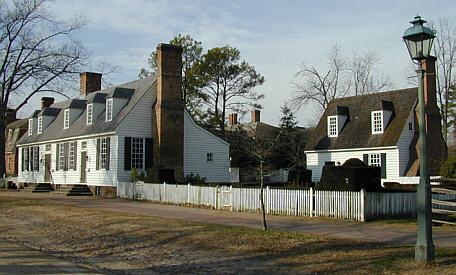
John Blair House and Kitchen — The John Blair House is inside the historic area. It is recommended that visitors purchase an admission ticket. Your ticket not only is required to see many of the attractions, but it is also a visible show-of-support for the programs and activities of Colonial Williamsburg.
John Blair, Sr., whose uncle was the Reverend James Blair, was a burgess and auditor for the colony of Virginia from 1728-1771. His son, John Blair, Jr., graduated from the College of William and Mary and served as a burgess during the Revolutionary War. After the war, he served as a Virginia representative at the Constitutional Convention and was appointed to the Supreme Court by President George Washington.
 |
Bruton Parish Church Services on Sunday & Special Days. One of the oldest Episcopal Churches in America, this historic building has been in service to God and Man continuously since 1715. Open to visitors every day. (Williamsburg Marker) |
Bruton Parish Church — The congregation of the church was founded from several smaller congregations in 1674. The current church was completed in 1715 and has since been in continuous use.
Among the parishioners attending the church were George Washington, Thomas Jefferson and James Monroe. Also among the parishioners were black slaves who were also welcomed in the church. George Washington personally sponsored more than a dozen slaves for baptism, serving as Godfather.
During the Revolutionary War, the parish church bell served as the town’s liberty bell.
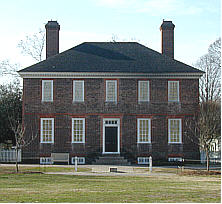 George
Wythe House — George Wythe was among the most influential Virginians during
the Revolutionary War. After Thomas Jefferson attended William and Mary, he
studied law under George Wythe. Jefferson called him “my faithful and beloved
mentor in youth, and most affectionate friend through life.”
George
Wythe House — George Wythe was among the most influential Virginians during
the Revolutionary War. After Thomas Jefferson attended William and Mary, he
studied law under George Wythe. Jefferson called him “my faithful and beloved
mentor in youth, and most affectionate friend through life.”
Wythe served in the House of Burgesses and was a delegate to the Continental Congress. He was also a signer of the Declaration of Independence. In 1779, he became the first Chair of Law at William and Mary and among his students were James Monroe and John Marshall.
In 1781, the Wythe House served as headquarters for George Washington. After the surrender at Yorktown, the house was headquarters for General Rochambeau.
George Wythe died in 1806 and is buried at St. John’s Church in Richmond (a previous site on this road trip).
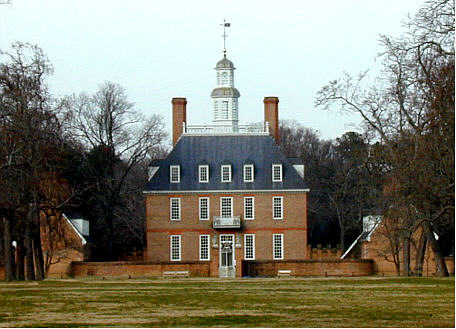
The Governor’s Palace — The palace is the great structure at the north end of the Palace Green. Completed in 1722, it was at its time, one of the finest structures in America. Today, the reconstructed palace lives up to its 1722 reputation. An admission ticket is required for a tour.
For most of Williamsburg’s colonial history, the palace was home to the Royal Governor, but beginning in 1765 a movement began in Virginia that would eventually move the palace out from under the British Crown and place it in the hands of the colonists. By April of 1775, the Royal Governor at that time, Lord Dunmore, clearly feared for his and his family’s safety. Despite efforts by Virginia’s moderate leaders to keep the governor in his palace, Dunmore and his family fled Williamsburg by sea on June 8, 1775. He later retaliated by ordering the shelling of Norfolk on January 1, 1776, burning the town in a great fire.
Beginning in July 1776, the palace served as residence for the first two Colonial governors of Virginia, Patrick Henry and Thomas Jefferson. After Jefferson moved the capital to Richmond and Cornwallis’ brief stay in Williamsburg, the palace served as a hospital. Behind the palace is a graveyard where over 150 American soldiers are buried.
On the night of December 22, 1781, fire broke out in the palace and it burned to the ground. Today’s reconstruction is built on the foundations of the original palace.
Visitors to the palace are met at the door by a guide in period dress and are shown throughout the grand structure. British royalty and the power of the Crown are emphasized in the tour as over 800 guns and swords decorate the walls and ceilings of many of the rooms. Among the furnishings are several pieces actually owned by Lord Dunmore.
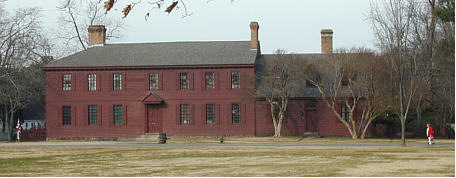 |
|
Peyton Randolph House For more than fifty years this was the home of Peyton Randolph (1721-1775), who served the Colony of Virginia in many of its highest governmental offices and became the first president of the Continental Congress. His father, Sir John Randolph, the only colonial Virginian to be knighted, lived here until his death in 1737. The original house is unusual for its seven fully paneled rooms. The furnishings reflect the home of a family prominent in the social and political life of the colony. (Williamsburg Marker) |
Peyton Randolph House — Peyton Randolph, as mentioned earlier, was the son of Sir John Randolph, and was a patriot for the American cause. Besides serving as speaker of the Continental Congress, he also served Virginia as attorney general and speaker of the House of Burgesses. He died of a stroke at the beginning of the Revolution in Philadelphia in 1775.
After his death, his wife, Mrs. Betty Harrison Randolph, continued to live in the house. However, prior to the Siege of Yorktown, she relinquished the house to General Rochambeau, who also made this house his headquarters for a period of time.
 |
The Public Gaol This was Virginia’s chief prison which housed debtors and criminals and served as the jail for the General Court in the nearby capital. Here Blackbeard’s pirates, captured in 1718, were confined until the day of their hanging. Leg irons, an exercise yard, food slots, and criminal cells with primitive sanitation have been restored to their early appearance. (Williamsburg Marker) |
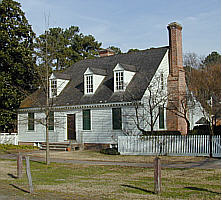 Public Gaol —
The gaol served as a
military prison during the Revolutionary War. Confined to the gaol were captured
British soldiers, Tory sympathizers, traitors, deserters and spies.
Public Gaol —
The gaol served as a
military prison during the Revolutionary War. Confined to the gaol were captured
British soldiers, Tory sympathizers, traitors, deserters and spies.
After the war, the building continued to serve as a Williamsburg prison into the twentieth century. Today, the restored gaol is furnished with shackles unearthed during its restoration.
Benjamin Powell House — Powell was a builder and among the structures he erected was the tower and steeple at Bruton Parish Church. Powell was a patriot and served on an embargo committee of British goods. Other members included George Wythe and Peyton Randolph.
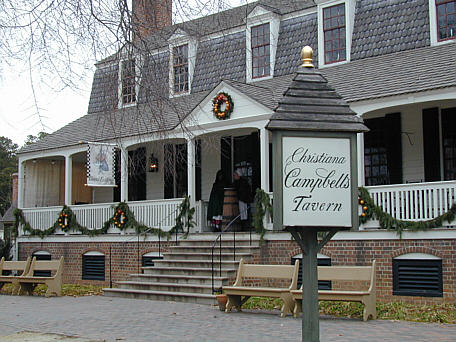
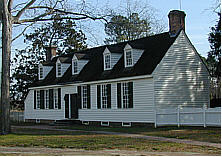 Christiana Campbell’s Tavern — The tavern can be
found about a block south of the Powell House. The tavern was one of George
Washington’s favorite dining spots. Today, the reconstructed tavern continues
its colonial tradition offering many colonial dishes on the menu. The tavern is
a recommended spot for dinner.
Christiana Campbell’s Tavern — The tavern can be
found about a block south of the Powell House. The tavern was one of George
Washington’s favorite dining spots. Today, the reconstructed tavern continues
its colonial tradition offering many colonial dishes on the menu. The tavern is
a recommended spot for dinner.
Benjamin
Waller House — Waller was a prominent Williamsburg attorney. George Wythe
was among the law students that he mentored.
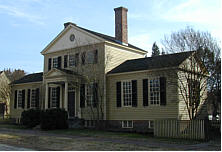 About a half-block west of the Waller House is an entrance
that leads to Bassett Hall, the former Williamsburg house of John D.
Rockefeller. Rockefeller is largely responsible for providing capital to support
the reconstruction and restoration of Colonial Williamsburg, which began in
1926.
About a half-block west of the Waller House is an entrance
that leads to Bassett Hall, the former Williamsburg house of John D.
Rockefeller. Rockefeller is largely responsible for providing capital to support
the reconstruction and restoration of Colonial Williamsburg, which began in
1926.
William Finnie House — The architecture of the house is considered classic Williamsburg.
During the Revolutionary War, William Finnie served the
southern department of the Continental army as Quartermaster.
 The
Capitol — The Capitol is a reconstruction of Virginia’s first capitol
in Williamsburg. Fire gutted the first capitol in 1747 and was replaced with a
different structure in 1753. This structure was destroyed by fire in 1832.
The
Capitol — The Capitol is a reconstruction of Virginia’s first capitol
in Williamsburg. Fire gutted the first capitol in 1747 and was replaced with a
different structure in 1753. This structure was destroyed by fire in 1832.
Within the second capitol, many major events took place that led Virginia and the other colonies to war with the British. The first event took place on May 30, 1765 during a stormy session of the House of Burgesses. A political newcomer, Patrick Henry, introduced several resolutions attacking the Stamp Act (a tax on various commercial and legal documents) and the notion of taxation without representation. His resolutions, copies of which spread throughout the colonies, influenced mob violence in Boston and the creation of the Stamp Act Congress in New York City.
British Parliament, under pressure from commercial interests, repealed the Stamp Act in February 1766. However, in June of 1767, King George III assented to a new series of taxes on imports including glass, paint, paper and tea (Townshend Acts). Four years later, again under pressure from commercial interests, the Parliament repealed all import duties on all items except tea.
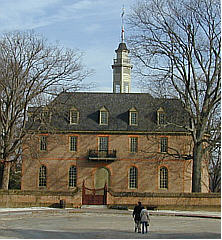 The
Virginia Assembly, meeting in the Capitol, with members now including Thomas
Jefferson, George Washington and Richard Henry Lee, passed a resolution that
June 1, 1774 would be set aside as a day of fasting, humiliation and prayer in
support for its “sister colony,” Massachusetts where protests such as the
famous Boston Tea Party were escalating to a violent confrontation with British
forces.
The
Virginia Assembly, meeting in the Capitol, with members now including Thomas
Jefferson, George Washington and Richard Henry Lee, passed a resolution that
June 1, 1774 would be set aside as a day of fasting, humiliation and prayer in
support for its “sister colony,” Massachusetts where protests such as the
famous Boston Tea Party were escalating to a violent confrontation with British
forces.
Two days after the resolution was passed, Virginia’s Royal Governor, Lord Dunmore dissolved the Virginia Assembly. Despite the governor’s action, the assembly reconvened at the Raleigh Tavern, just west of the Capitol on Duke of Gloucester Street. Here, they pronounced that an “attack on one of the colonies is an attack on all.”
In August, Virginia’s leadership elected delegates to the first Continental Congress. One of those delegates, George Washington declared, “If need be, I will raise one thousand men … and march myself at their head for the relief of Boston.”
On May 15, 1776, the legislature instructed its delegates in Philadelphia “to declare the United Colonies free and independent states, absolved from all allegiance to, or dependence upon, the Crown or Great Britain …,” leading directly to the Declaration of Independence. Also, during the same time period, the assembly adopted a Declaration of Rights, which later became the basis for the Bill of Rights in the US Constitution.
On July 6, 1776, Patrick Henry was inaugurated as the first elected American governor of the state of Virginia. Meanwhile, not to take his unseating lightly, Lord Dunmore, now living on British ships on Chesapeake Bay, led a raid up the Potomac River threatening George Washington’s Mount Vernon home. Lord Dunmore abandoned his efforts in August 1776.
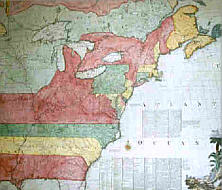 On
January 2, 1778, with the war mostly being fought in the north, the great Indian
fighter, George Rogers Clark was authorized by Governor Henry to raise several
companies with the mission to defend the Kentucky frontier. Under a secret
mission, he also planned to attack settlements and forts along the Mississippi
with his final objective being British-held Fort Detroit. At the time, Virginia
claimed land stretching west to the Mississippi and north to the Great Lakes.
On
January 2, 1778, with the war mostly being fought in the north, the great Indian
fighter, George Rogers Clark was authorized by Governor Henry to raise several
companies with the mission to defend the Kentucky frontier. Under a secret
mission, he also planned to attack settlements and forts along the Mississippi
with his final objective being British-held Fort Detroit. At the time, Virginia
claimed land stretching west to the Mississippi and north to the Great Lakes.
When the British began to turn their attention from the north to the south, they staged their first invasion of Virginia in 1779 attacking the nearby towns of Portsmouth, Norfolk and Suffolk. The proximity of the attack clearly showed the vulnerability of Williamsburg and the legislature moved the capitol from Williamsburg to Richmond the next year.
Today, visitors to the reconstructed, first Williamsburg Capitol can tour the House of Burgesses, the General Court, Council Chambers and Committee rooms.
 Raleigh
Tavern — The tavern, with its close proximity to the Capitol, served
as a center for social, commercial and political gatherings. In 1775, there was
a welcome home reception at the tavern when Peyton Randolph returned as
president of the first Continental Congress. The tavern was also one of George
Washington’s favorite dining spots.
Raleigh
Tavern — The tavern, with its close proximity to the Capitol, served
as a center for social, commercial and political gatherings. In 1775, there was
a welcome home reception at the tavern when Peyton Randolph returned as
president of the first Continental Congress. The tavern was also one of George
Washington’s favorite dining spots.
The tavern served as the default home of the Virginia Assembly after it was dissolved by the Royal Governor. The first occurrence was in 1769 when then Governor Botetourt dissolved the assembly for protests against the Townshend Acts. The assembly reconvened at the tavern to draw up a boycott of British goods. Five years later, the assembly reconvened here when Lord Dunmore dissolved the governing body.
Today, visitors can tour the reconstructed tavern room and purchase baked goods from the tavern bakery.
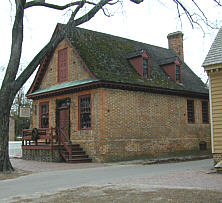 Charlton
House —
Edward Charlton, a wigmaker, performed a very important service for colonial
politicians and aristocrats. Among his customers were Thomas Jefferson, Patrick
Henry, George Wythe and Peyton Randolph.
Charlton
House —
Edward Charlton, a wigmaker, performed a very important service for colonial
politicians and aristocrats. Among his customers were Thomas Jefferson, Patrick
Henry, George Wythe and Peyton Randolph.
Prentis Store — The store was built during the late 1730’s. In 1774, Yorktown patriots staged their own tea party. The tea they threw into the York River was consigned to the Prentis Store.
The Magazine —
The magazine, which stored several tons of gunpowder, was
protected by a high wall. It was on April 21, 1775 that Lord Dunmore ordered the
removal of the powder from the magazine. The removal was accomplished at night.
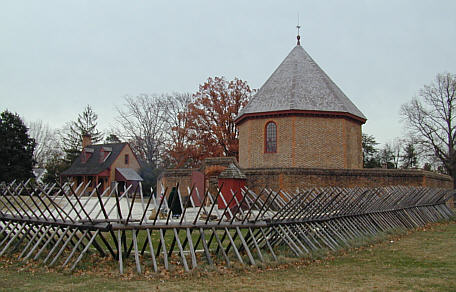
Palace Green — The Palace Green completes the walking tour of Williamsburg. It can be found a block west of the Magazine on the north side of Duke of Gloucester Street.
The Palace Green was witness to the arrival of both British and American forces prior to the Battle of Yorktown. Cornwallis and his combined armies arrived in Williamsburg on June 25, 1781. He occupied the city for about ten days before his departure to Portsmouth and his skirmish with Lafayette’s forces.
After Cornwallis moved to Yorktown, Washington and Rochambeau arrived at Williamsburg in mid-September 1781. Amid the pomp and circumstance of a grand military review, they planned the siege of Yorktown. On September 28th, the forces moved out of the city to take their positions around Yorktown.
The stage was set for the final major battle of the Revolutionary War.
